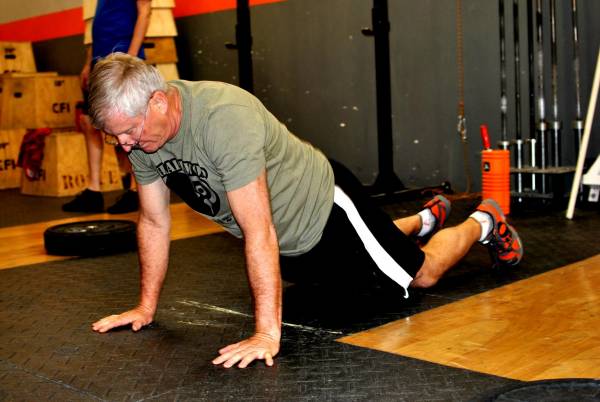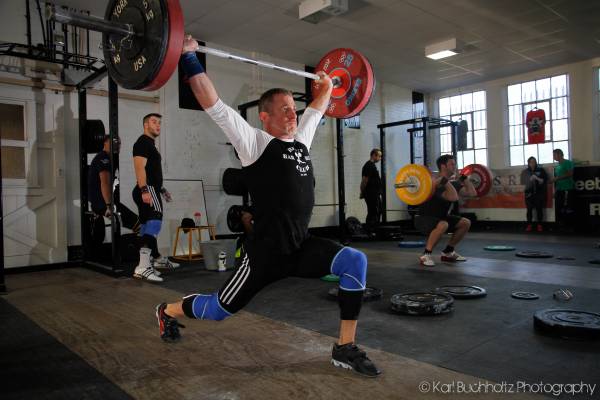Remember when you were younger and you could eat whatever you wanted for weeks straight and burn it off in a single week of strict eating and training?
That’s not going to happen for you at forty. Nor is being able to have a late night during the week and then be capable of anything even close to your best the next day. This is natural and all part of the gradual slowdown as we age.
But that doesn’t mean you can’t stay active. Looking around, I see I have some friends who, like me, have decided to live a healthy, fit lifestyle. Some of these guys and girls are still playing rugby, cycling competitively, and competing in Brazilian jiu jitsu. And they’re all doing well because of a few simple decisions.
Live a Healthy Lifestyle
The first of these decisions is to live a healthy lifestyle. This lifestyle isn’t one of abstinence or solitude. Rather, it is a conscious realization that every action you take has an impact on your health, fitness, and performance.
The second part of this is that the long-term journey is all about health, fitness, and performance in that order. At forty, the trade-off between chasing a bigger deadlift and having a back that doesn’t feel like it’s made of wood is an easy choice. Training becomes more about feeling good rather than the absolute levels you can attain.
“At forty, the trade-off between chasing a bigger deadlift and having a back that doesn’t feel like it’s made of wood is an easy choice.”
This isn’t to say you no longer train hard – far from it. I can still out train many guys half my age thanks to years and years of training stored up in my muscles. This is a big distinction between training for fitness and training for performance. When I compete, I use up whatever fitness I have stored. I then need to go through a rebuilding process to attain the next peak and do it again at the next event. In contrast, training for fitness means I only ever store my training away, adding layer upon layer of deeply rooted fitness within my body.
Exercise Snacks
One of the ways I build this fitness is by frequent use of exercise snacks. Like a regular snack, these are small samplers of a full meal. And just like a snack, it’s possible to get in many of them during a day compared to full meals.
Good possible snacks:
- Push ups – Every trip to the toilet “costs” so many push ups.
- Pull ups – Place a bar above your bedroom doorway and “pay” for entry.
- Kettlebell swings – Every thirty minutes do twenty swings.
In a single day, something like these three simple things has seen me do thirty pull ups in sets of five, 120 push ups, and 400 swings. Over a week that is 150 pull ups, 600 push ups, and 2,000 swings. And that’s before I’ve even started training.
The bonus about the use of these snacks is that as you get older you’ll notice long bouts of sitting really mess with you. Frequent movement keeps the joints greased up and the body supple, allowing you to train better when you do get to the gym.

Wisdom in the Gym
When you do make it to the gym, you have the benefit of wisdom on your side. Wisdom is the combination of knowledge and experience that allows you to (hopefully) avoid dumb decisions. You know the kind of thing I’m talking about. Like the time you hit a personal record in the deadlift, and then went back two days later and tried it again, and then your back was sore for days afterward? Wisdom tells us we can’t cope so well with training to the max every day.
“Have the discipline to train light when you are supposed to. Resist the temptation to do more even though you possibly can. Save that extra energy for the next heavy workout.”
The easiest way to moderate your training so you can train for life is with a light, medium, and heavy approach. The basic rule is that your hardest (heaviest) day will always be followed by the easiest (lightest). So you would perform the lowest number of reps the workout after you do the most in that cycle. Using the same three exercises as in the exercise snack examples, here are two methods you can use to moderate training volume.
Method 1:
- Day 1 – 4 sets of each exercise
- Day 2 – 5 sets of each exercise
- Day 3 – 3 sets of each exercise
Repeat as needed. This works best if your rep range or load for whatever exercises you’ve picked stays constant. This system allows you to train nearly daily if you want.
Method 2:
- Day 1 – 3 sets of push ups, 4 sets of pull ups, 5 sets of swing
- Day 2 – 4 sets of push ups, 5 sets of pull ups, 3 sets of swings
- Day 3 – 5 sets of push ups, 3 sets of pull ups, 4 sets of swings
Repeat as needed. This method is a little more complicated, but cycles fatigue in each exercise. Every workout is roughly the same in terms of total intensity though, with a light, medium, and heavy exercise in every session, so you may end up needing more time off. This method works better if you don’t have the time to train every day or you like to alternate between strength sessions and endurance work.

My Training Week
I currently use the first method in my warm ups, performing bodyweight push ups, pull ups, and squats, cycling through each day exactly as shown. My normal week is three sets on Monday, four sets Tuesday, five sets Wednesday, three sets Thursday, and five sets Friday.
That’s twenty extra sets of work I get each week that don’t negatively impact how much recovery I need, as well as making 100% sure I am warmed up for the main workout. It also equates to 400 push ups each week, 120 pull ups, and 300 squats on top of all my other training.
“At forty, the trade-off between chasing a bigger deadlift and having a back that doesn’t feel like it’s made of wood is an easy choice. Training becomes more about feeling good rather than the absolute levels you can attain.”
The main part of my workout follows a similar trend and sees me doing four supersets of push/pull work on Monday, five sets Wednesday, and three sets Friday. The other two days are lower-body based days. Because there are only two lower-body days, I have removed the medium day and have only a five-set heavy day and a three-set light day.
This system can be used for cardiovascular training, too. Right now, along with my daily strength work, I run five days per week. I regard a “set” as a fifteen-minute block. So a light three-set run equates to 45 minutes of running. Four sets is an hour, and five sets 75 minutes. I always follow my longest run with a shorter run, just like in the strength plan.
Be Consistent and Recover When Needed
These two things alone – frequent exercise snacks and fatigue cycling – will add a tremendous amount of work to your training if you follow your plan. Have the discipline to train light when you are supposed to. Resist the temptation to do more even though you possibly can. Save that extra energy for the next heavy workout.
You’ll find training this way allows you to train consistently year round and requires little time off for recovery as the recovery days are built into the plan.
More Like This:
- Fit at Forty: 3 Keys for Guys Like Me
- The Gifts of Being Forty-Five
- 4 Safe and Effective Workouts for 40+ Athletes
- New on Breaking Muscle Today
Photo 1 courtesy of Shutterstock.
Photos 2 courtesy of CrossFit Impulse.
Photo 3 courtesy of Karl Buchholtz






